Bison vs. Buffalo: Understanding the Holy Animal
Ever stared at a wildlife photo and wondered if you’re looking at a bison or buffalo? You’re not alone. About 87% of Americans can’t correctly identify these majestic beasts when shown side-by-side images.
The confusion makes sense. Both are massive, horned, and carry that unmistakable prehistoric vibe. But knowing the difference between bison and buffalo isn’t just trivia—it’s understanding two completely different evolutionary stories.
By the end of this post, you’ll spot the difference between these iconic creatures instantly. You’ll learn why Native Americans considered the American bison a sacred animal, and why confusing it with the Cape buffalo could mean more than just getting facts wrong.
Ready to discover why that massive beast on the American nickel might not be what you’ve been calling it all these years?
Taxonomic Distinctions: What Makes Bison and Buffalo Different
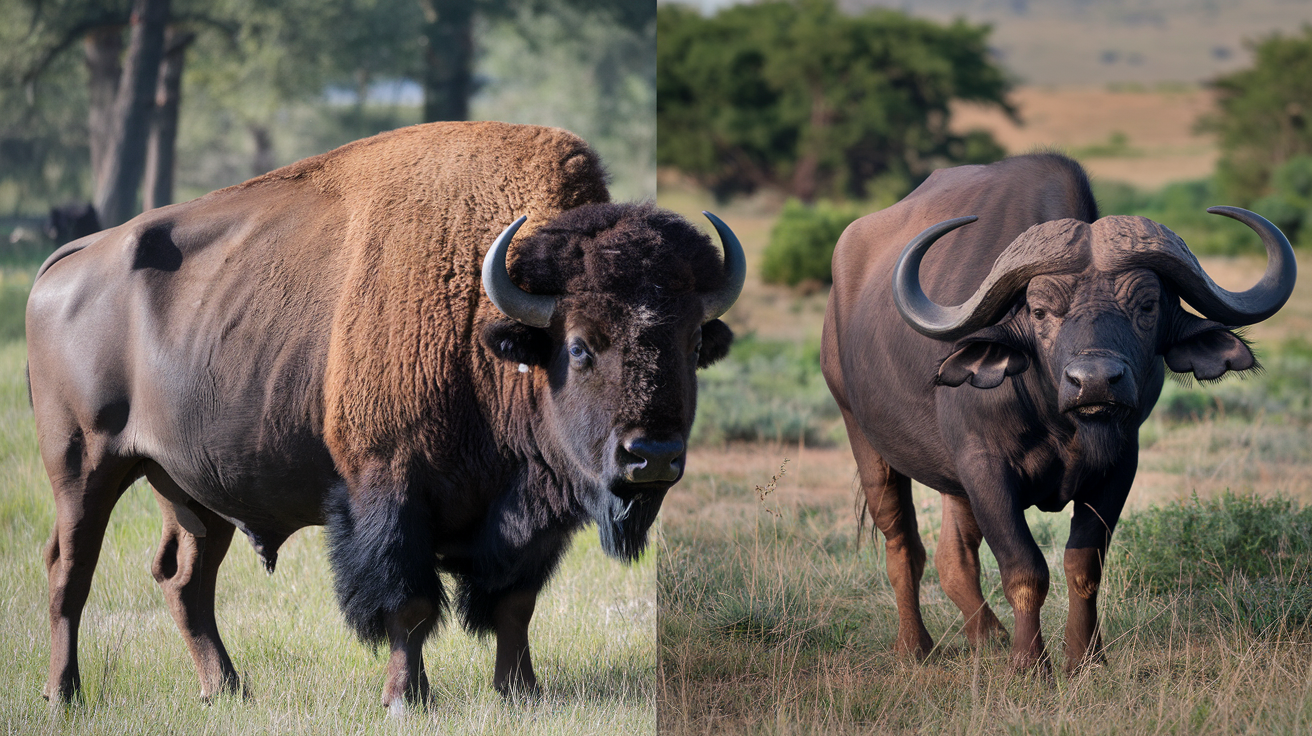
Scientific Classification: Understanding the Bovidae Family
Ever wondered why the mix-up between bison and buffalo happens so often? It starts with their family tree. Both animals belong to the Bovidae family – that massive group of hoofed mammals that includes cows, goats, and antelopes.
But here’s where they split: bison fall under the genus Bison, while true buffaloes belong to either Syncerus (African buffalo) or Bubalus (Asian water buffalo). This isn’t just scientific nitpicking – these classifications reflect real genetic differences that developed over millions of years.
The American bison (Bison bison) and European bison (Bison bonasus) are closely related cousins. Meanwhile, the Cape buffalo (Syncerus caffer) and water buffalo (Bubalus bubalis) developed along completely different evolutionary paths.
Physical Characteristics: Key Features to Tell Them Apart
Spot a massive, shaggy beast with a dramatic shoulder hump and a beard? That’s a bison. Their distinct features include:
- Massive shoulder hump made of muscle (not fat!)
- Thick, woolly coat on their front half
- Shorter, more curved horns
- Shaggy beard and mane
- Shorter tail with a small tuft
Buffalo look noticeably different:
- No pronounced shoulder hump
- More symmetrical body shape
- Much larger and more dramatic horns
- Sparse hair covering their entire body
- Longer tails with a more prominent tuft
The African Cape buffalo sports those intimidating “boss” horns that form a continuous bony shield across the forehead. Water buffalo have those sweeping curved horns that can span over 6 feet tip-to-tip!
Geographic Distribution: Where Each Species Naturally Lives
The name confusion makes more sense when you realize these animals never naturally overlap in the wild.
Bison are Northern Hemisphere creatures. American bison once thundered across North America in herds of millions. Today, they’re found in protected parks and reserves mainly in the US and Canada. Their European cousins cling to existence in isolated pockets of Poland and Belarus.
True buffaloes have never set hoof in America. African buffalo roam the savannas and forests of sub-Saharan Africa. Water buffalo are native to the swampy regions of South and Southeast Asia.
Evolutionary History: Tracing Their Separate Development
The bison and buffalo family split happened millions of years ago. Bison evolved to thrive in colder climates with those thick coats and powerful snow-plowing heads. They crossed from Asia to North America around 400,000 years ago via the Bering land bridge.
Buffalo took different evolutionary paths. African buffalo adapted to diverse African landscapes from dense forests to open grasslands. Water buffalo evolved in the wet, muggy climates of Asia, developing those wide splayed hooves perfect for navigating muddy terrain.
These different evolutionary journeys explain why each species developed its unique traits – from the bison’s cold-weather adaptations to the water buffalo’s affinity for marshy habitats. They may look somewhat similar at first glance, but their DNA tells the story of millions of years of separate development.
The American Bison: Icon of the Great Plains
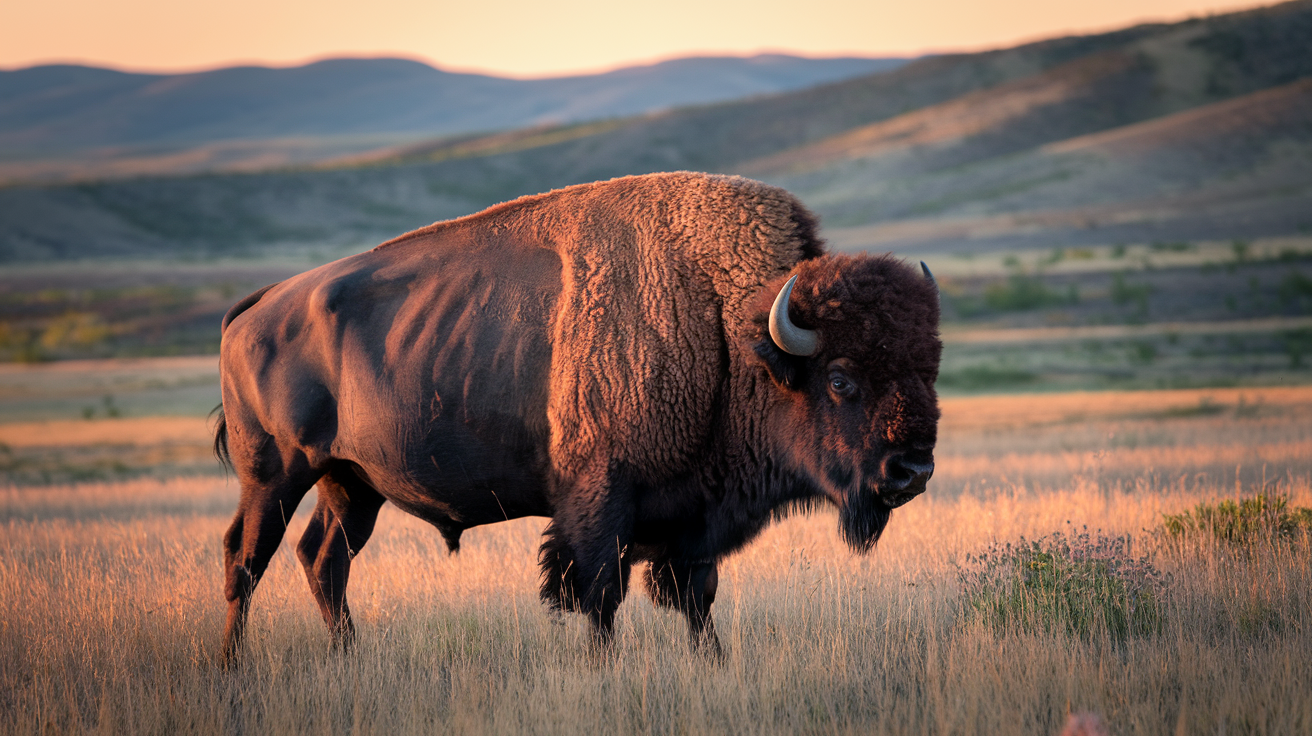
A. Historical Population and Near Extinction
Imagine the Great Plains before European settlement – over 30 million American bison roamed freely across North America. That’s more than 10 times the current U.S. cattle population. These massive animals dominated the landscape from Mexico to Canada, creating one of the greatest wildlife spectacles on Earth.
Then came the 1800s. A perfect storm hit the bison population:
- Government-sanctioned killing to weaken Native American tribes
- Commercial hunting for hides and tongues (leaving carcasses to rot)
- Sport hunting from train windows
- Habitat loss as railroads and settlements expanded
By 1889, only about 1,000 bison remained. A 99.997% population crash in less than a century. The American bison stood at the edge of extinction.
B. Cultural Significance for Native American Tribes
The bison wasn’t just an animal to Native Americans – it was life itself.
Plains tribes like the Lakota, Blackfeet, and Comanche built their entire cultures around the bison. These weren’t just hunting relationships; they were deeply spiritual connections.
Every part of the bison served a purpose:
- Meat for food
- Hides for tipis and clothing
- Bones for tools
- Sinew for bowstrings
- Stomachs for water containers
- Dung for fuel
The Lakota called the bison “Tatanka,” a being worthy of ceremony and prayer. When a bison was killed, prayers of thanks were offered. The near-extinction of bison devastated Native cultures physically and spiritually.
C. Conservation Success Story: Bringing Bison Back
The comeback began with just a handful of private ranchers and concerned citizens who saved small herds. William Hornaday and Theodore Roosevelt formed the American Bison Society in 1905, starting serious conservation efforts.
Yellowstone National Park became a sanctuary for the last wild bison. From just 23 animals in 1902, careful protection allowed numbers to grow.
Today, about 500,000 bison exist in North America – though most are managed as livestock with cattle genes mixed in. Only about 15,000 are considered truly wild, genetically pure bison.
D. Modern Management of Bison Herds
Managing modern bison herds is complicated. Issues include:
- Limited space (bison need room to roam)
- Brucellosis concerns (a disease that can spread to cattle)
- Competing interests between ranchers and conservationists
- Tribal rights to restore cultural bison practices
Several Native American tribes now manage their own bison herds, combining modern conservation with traditional knowledge. The InterTribal Buffalo Council helps coordinate these efforts across 69 tribes.
E. Ecological Impact on Grassland Ecosystems
Bison aren’t just charismatic megafauna – they’re ecosystem engineers.
Their grazing patterns create habitat diversity. Unlike cattle, bison graze in patches, moving constantly. This creates a mosaic of vegetation heights that benefits different species.
Their wallowing (dust bathing) creates small depressions that collect water, creating microhabitats for amphibians and plants.
Bison even affect fire patterns. Their grazing reduces fuel loads in some areas while allowing buildup in others, creating natural firebreaks.
Prairie dogs follow bison herds, benefiting from the shorter grass. This creates habitat for burrowing owls and other species.
The return of bison to parts of their historic range is showing promising results in restoring grassland health and biodiversity.
True Buffaloes of the World
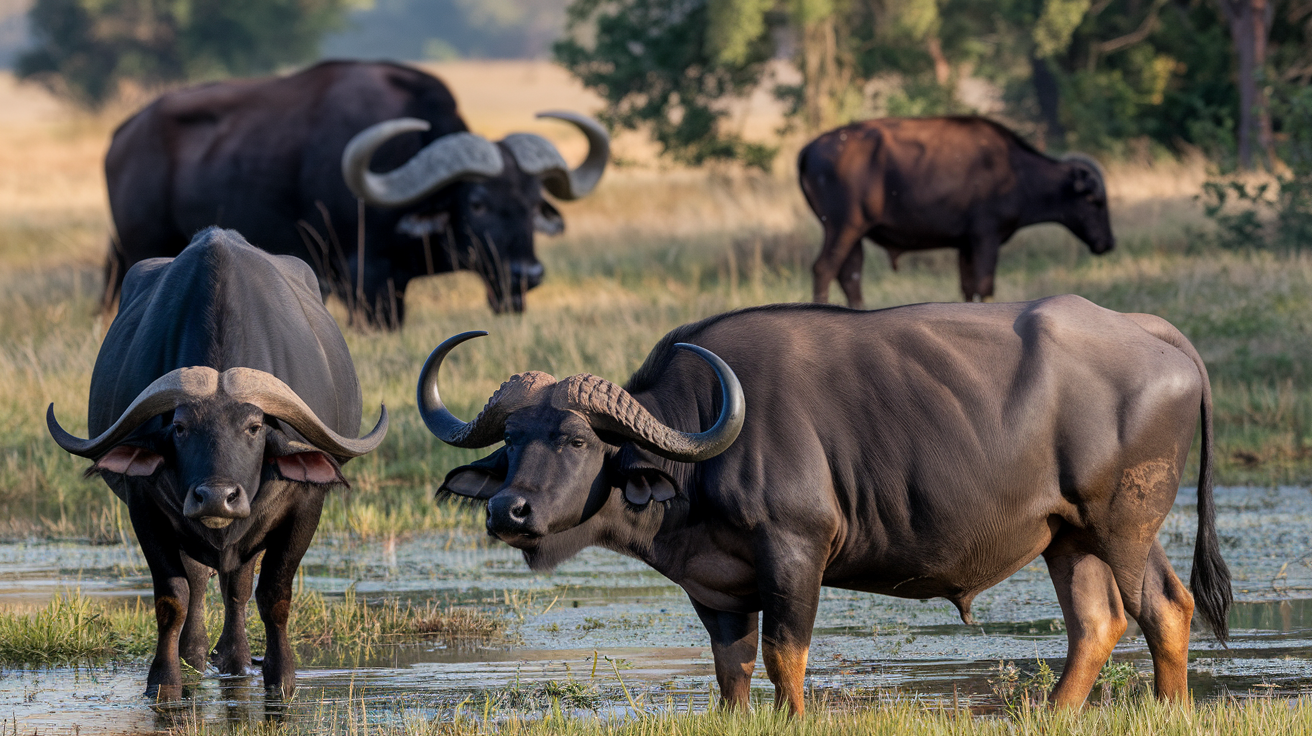
African Cape Buffalo: The Formidable Big Five Member
Ever wondered what animal strikes the most fear into African hunters’ hearts? It’s not the lion or leopard—it’s the Cape buffalo.
These massive beasts weigh up to 1,750 pounds and sport impressive curved horns that form a protective helmet called a “boss.” Don’t let their cow-like appearance fool you. Cape buffaloes have earned their nickname “Black Death” for good reason. Wounded buffaloes are known to circle back and ambush hunters, making them responsible for more hunter fatalities in Africa than any other large animal.
Living in herds that can number from 50 to 500 individuals, Cape buffaloes have a remarkable social structure. They make decisions democratically—no joke! When it’s time to move, herd members will stand and face their preferred direction. The majority literally rules, with the herd moving in whatever direction most buffaloes are facing.
These animals can be found across sub-Saharan Africa’s savannas and woodlands, where they play a crucial ecological role by creating grazing lawns that benefit other species.
Asian Water Buffalo: Domestication and Agricultural Importance
The Asian water buffalo might not have the fearsome reputation of its African cousin, but its impact on human civilization has been enormous.
Domesticated for over 5,000 years, these powerful animals have been the backbone of agricultural systems throughout Asia. They’re living tractors—capable of pulling plows through muddy rice paddies where mechanical equipment would sink. A single water buffalo can cultivate land that feeds up to six people for a year.
Their contribution goes beyond just muscle power. Water buffalo milk contains higher fat content than cow’s milk, making it perfect for producing rich dairy products like ghee and mozzarella cheese. Yes, that authentic Italian mozzarella di bufala? It comes from these Asian giants!
In countries like India, Thailand, and Vietnam, water buffaloes aren’t just livestock—they’re capital assets, often representing a family’s entire wealth and status.
Wild vs. Domestic Buffalo Populations
The tale of buffalo populations tells two very different stories.
Wild Cape buffaloes remain relatively stable with approximately 900,000 individuals across Africa, though habitat loss and poaching pose increasing threats. Meanwhile, wild Asian water buffaloes face a dire situation with fewer than 4,000 remaining in isolated pockets of Nepal, India, and Southeast Asia.
The contrast with domestic populations couldn’t be more stark:
| Buffalo Type | Wild Population | Domestic Population |
|---|---|---|
| African Cape | ~900,000 | Not domesticated |
| Asian Water | <4,000 | >200 million |
Asian water buffaloes have become one of the world’s most numerous domestic animals, with over 200 million individuals—that’s nearly 10% of all domestic large mammals on Earth.
This dramatic disparity highlights a conservation paradox: while domestic buffalo breeds flourish, their wild ancestors edge toward extinction. Without wild populations, we lose important genetic diversity that could help domestic herds resist diseases and adapt to changing climates.
Sacred Status and Spiritual Significance
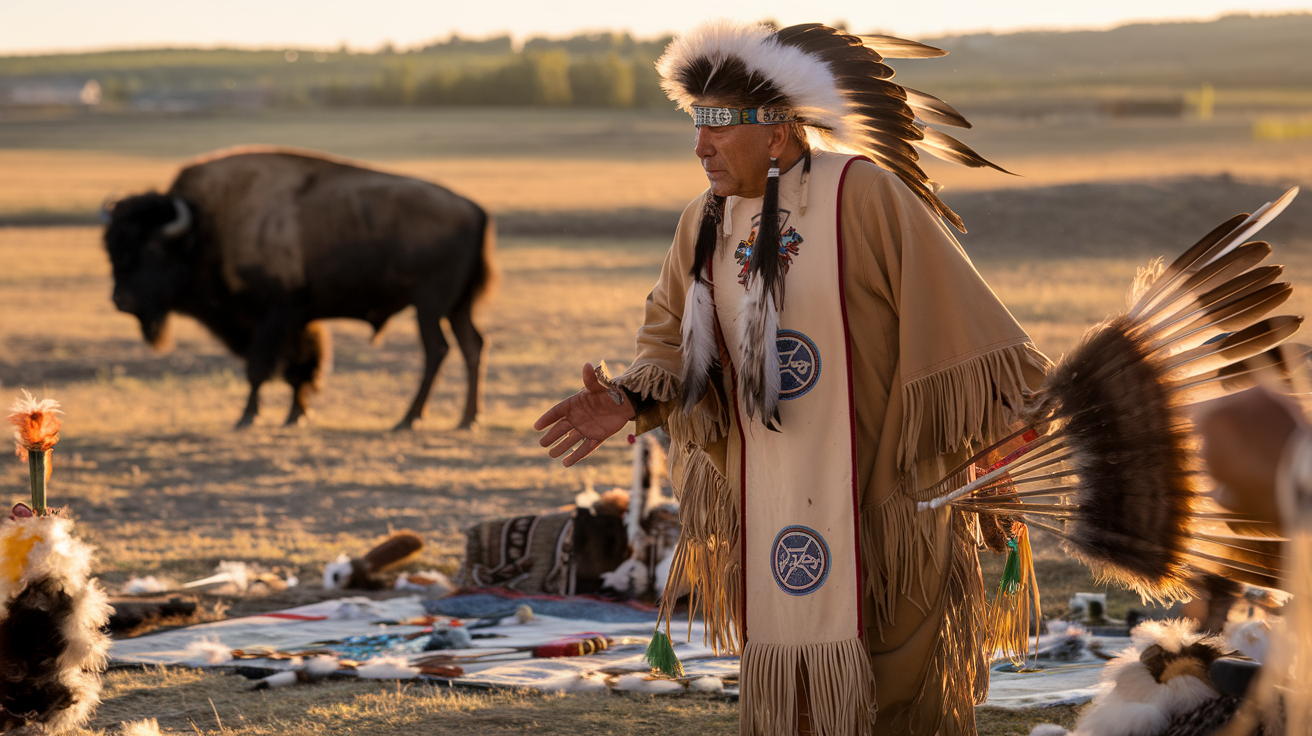
A. Bison in Native American Spirituality and Ceremony
The bison isn’t just an animal to Native American tribes—it’s life itself. For countless generations, Plains tribes like the Lakota, Blackfeet, and Cheyenne have revered the bison as a sacred provider and spiritual brother.
When a bison gave its life, nothing went to waste. The meat fed families, hides became tipis and clothing, bones transformed into tools, and even the bladder found purpose as water containers. This complete utilization wasn’t just practical—it honored the animal’s sacrifice.
In traditional ceremonies, the White Buffalo Calf Woman holds special significance for the Lakota. According to their oral history, she brought the sacred pipe and taught the people proper ceremonies, promising to return one day as a white buffalo calf—an extremely rare occurrence that’s celebrated as a profound spiritual event when it happens.
Many tribes perform the Buffalo Dance to honor these animals and ensure successful hunts. Dancers wearing buffalo headdresses mimic the movements of the great beasts, creating a spiritual connection between hunter and hunted.
B. Buffalo Worship in Eastern Traditions
Cross the globe to India and Nepal, and you’ll find the water buffalo holding similar sacred status. Lord Yama, the Hindu god of death, rides a buffalo as his vehicle. This isn’t coincidental—it represents the buffalo’s strength and connection to both life and death.
In rural villages across Southeast Asia, water buffalo sacrifices mark important religious festivals and ceremonies. Communities believe these powerful offerings please local deities and ancestors, ensuring protection and prosperity.
Thai and Cambodian traditions feature buffalo races and fighting competitions that blend entertainment with religious significance. These events aren’t just sport—they’re opportunities to honor the buffalo’s spirit and strength.
C. Symbolic Meanings Across Different Cultures
The bison and buffalo carry powerful symbolism globally:
| Culture | Symbolic Meaning |
|---|---|
| Plains Tribes | Abundance, generosity, sacrifice |
| Celtic | Strength, stability, provision |
| Chinese | Perseverance, hard work, agricultural prosperity |
| Hindu | Divine power, death, rebirth |
For some cultures, these animals represent stubborn determination—they face storms head-on rather than turning away. This quality inspired people to adopt similar resilience in their own lives.
D. Religious Texts and References to These Bovines
The buffalo appears in Hindu scriptures as Mahishasura, a powerful buffalo demon defeated by the goddess Durga. This story symbolizes the triumph of good over evil and appears prominently in the Devi Mahatmya text.
While bison don’t feature prominently in Christian texts, some Native American tribes incorporated Christian elements into their bison reverence after European contact. This created unique spiritual traditions blending indigenous beliefs with Christianity.
Ancient cave paintings across Europe, Asia, and North America feature bison and buffalo prominently. These aren’t just hunting records—they’re some of humanity’s earliest religious expressions, showing our ancestors’ profound spiritual connection to these magnificent animals.
When examined closely, these bovines transcend mere animal status in countless cultures. They embody divine principles, connecting humans to deeper spiritual truths about life, death, and our relationship with the natural world.
Conservation and Modern Relevance
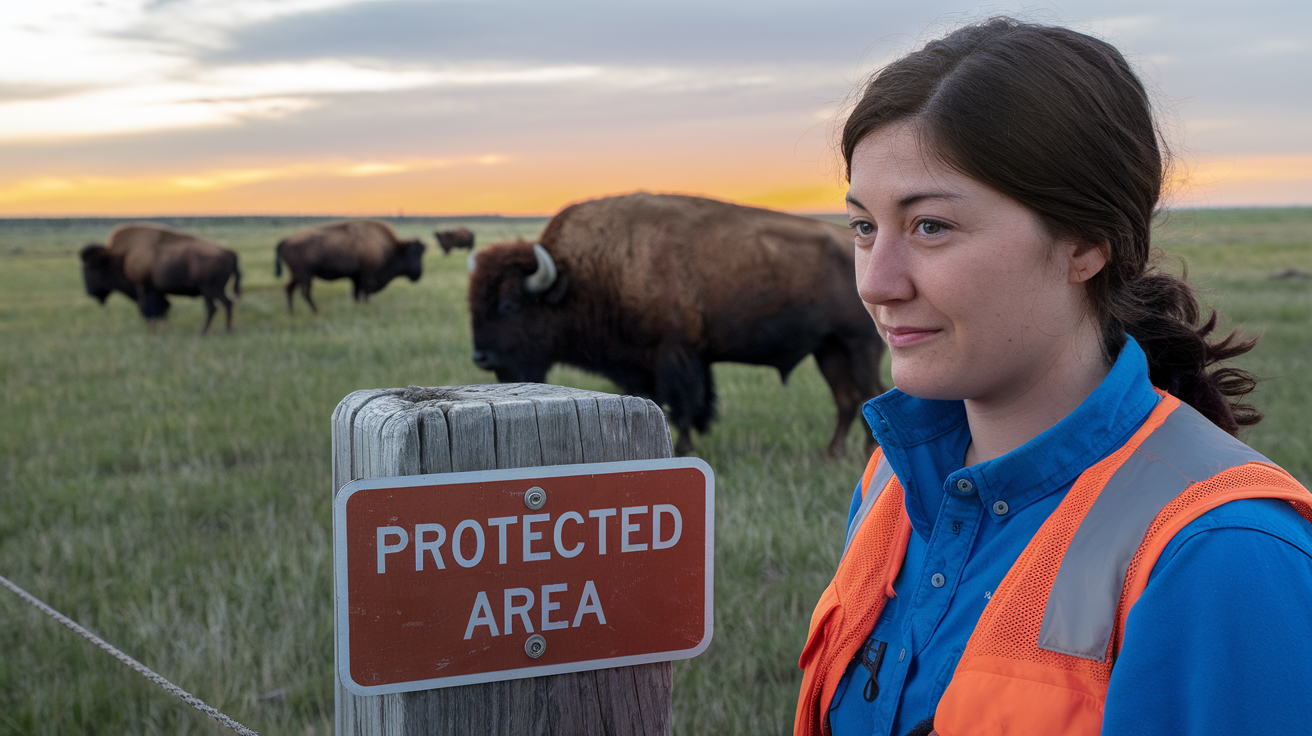
A. Current Threats to Wild Populations
The road hasn’t been smooth for these magnificent creatures. Wild bison and buffalo populations face serious challenges worldwide. Habitat loss tops the list as human development gobbles up their natural ranges. Farmland expansion, urban sprawl, and infrastructure projects have cut deeply into territories where these animals once roamed freely.
Climate change isn’t doing them any favors either. Shifting rainfall patterns affect grassland health, while extreme weather events disrupt their feeding and migration habits. In places like Africa, prolonged droughts force Cape buffalo to compete for dwindling water sources.
Disease outbreaks pose another major threat. Brucellosis remains a contentious issue for American bison, especially those wandering outside Yellowstone National Park boundaries. This disease causes tension between conservationists and ranchers worried about transmission to cattle.
Poaching continues despite protective legislation. Some buffalo species are hunted for their horns, which fetch high prices in black markets for traditional medicine or trophies.
B. Sustainable Management Practices
Smart management makes all the difference. Conservation groups now work with indigenous communities who’ve historically maintained balanced relationships with these animals. Their traditional ecological knowledge proves invaluable for modern conservation efforts.
Protected area networks have expanded dramatically, creating safe havens where these animals can recover. Yellowstone’s bison herd has grown from just 23 animals in 1902 to over 5,000 today.
Genetic diversity management has become a priority. The American Prairie Reserve program carefully tracks bloodlines to prevent inbreeding while strengthening resilience in bison populations.
Innovative solutions include wildlife corridors connecting fragmented habitats, allowing natural migration and preventing genetic isolation. Cross-border conservation agreements help protect herds that don’t respect political boundaries.
C. Ecological Benefits of Restoration
These aren’t just big animals – they’re ecosystem engineers. When bison graze, they create habitat patchiness that benefits countless other species. Their selective feeding habits promote plant diversity that wouldn’t exist otherwise.
Their hooves break up hard soil and create small depressions that collect water, essentially creating microhabitats. These wallows become mini-ecosystems supporting amphibians and specialized plants.
As they shed their thick winter coats, birds collect the fur for nesting material. Their dung provides essential nutrients and homes for dung beetles and other decomposers, cycling nutrients through the ecosystem.
Fire management improves with their presence too. Their grazing patterns create natural firebreaks and reduce fuel loads that might otherwise lead to catastrophic wildfires.
D. Economic Value: Tourism, Meat, and Products
These majestic animals pay their way. Wildlife tourism generates millions annually as people flock to see bison and buffalo in their natural habitats. Yellowstone’s bison alone draw countless visitors, supporting local economies through lodging, food services, and guiding operations.
The meat industry has embraced sustainable bison ranching. With lower fat content than beef and a rich flavor profile, bison meat commands premium prices while providing ranchers incentive for conservation.
Beyond meat, these animals contribute hides for leather, wool for textiles, and bones for traditional crafts. Indigenous artisans create sustainable livelihoods through traditional buffalo-based crafts that connect cultural heritage with conservation.
Carbon credit markets are opening new economic opportunities as well. Grasslands maintained by grazing bison sequester significant carbon, offering potential revenue through offset programs while fighting climate change.
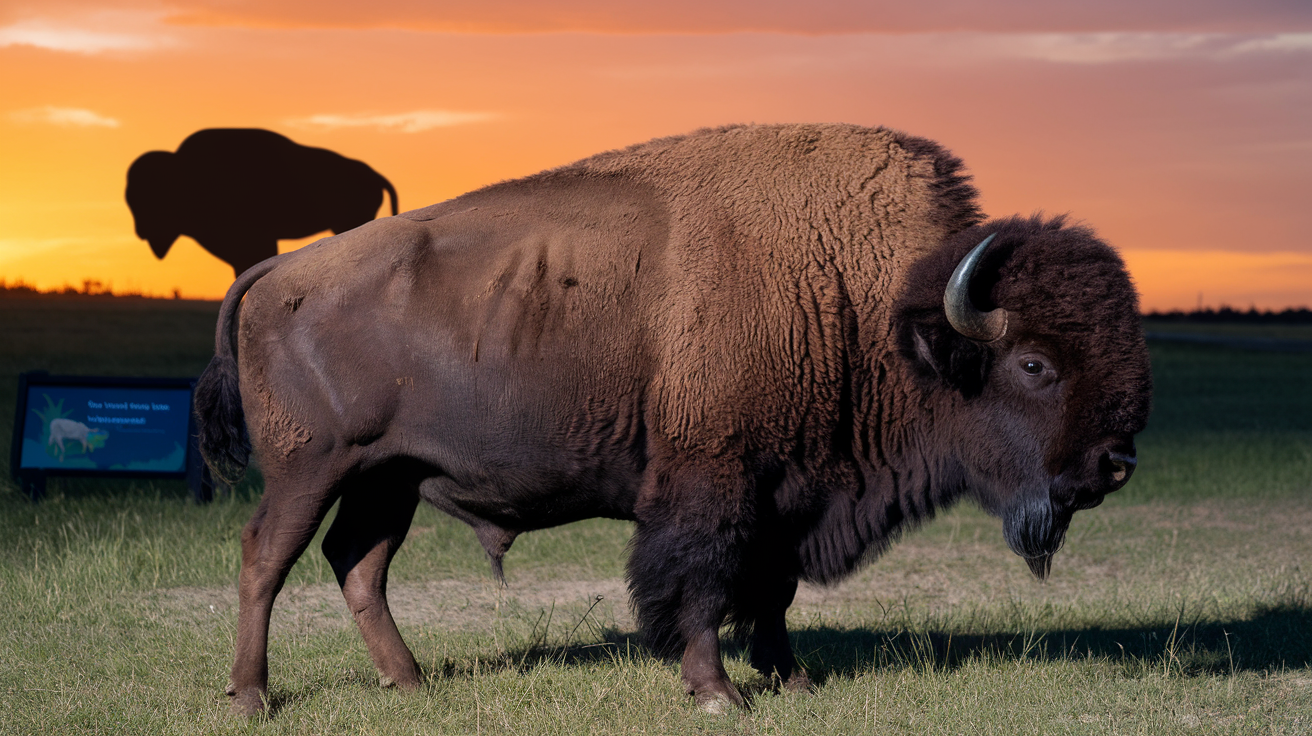
Bison and buffalo, while often confused, represent distinct species with significant differences in taxonomy, appearance, and geographical distribution. The American bison stands as a powerful symbol of North American heritage, having shaped Indigenous cultures and survived near-extinction. Meanwhile, true buffaloes—the African and Asian varieties—have their own rich cultural significance in their native regions, often viewed as symbols of strength and prosperity.
The sacred status of these magnificent animals transcends mere biological classification, embodying spiritual connections across diverse cultures. As we face environmental challenges, both bison and buffalo conservation efforts highlight our responsibility to preserve biodiversity and cultural heritage. By understanding and respecting these magnificent creatures, we not only honor their historical significance but also ensure their continued existence for future generations to appreciate and protect.





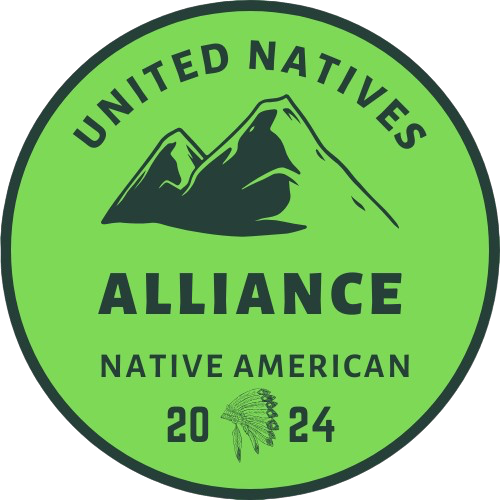
https://shorturl.fm/5JO3e
https://shorturl.fm/hevfE